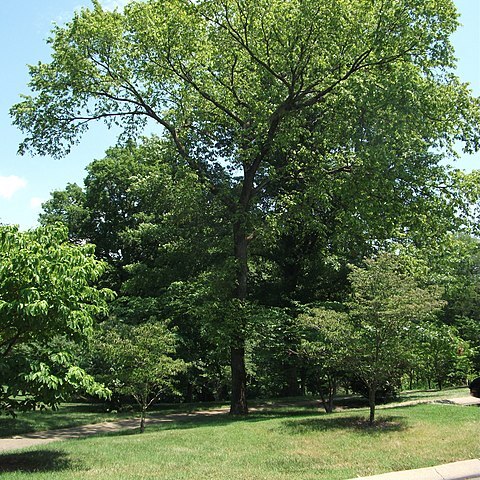Tree to 20 m; lvs oblong to oval or oblong-obovate, usually 6–10 cm, glabrous above; fls in short racemes, appearing in the fall; cal divided to the base into oblanceolate segments; fr elliptic, long-ciliate, 1–1.5 cm, the stipe 2 mm, the incurved teeth 2 mm; 2n=28. Upland woods; irregularly from Ky. and s. Ill. to nw. Ga., Ala., Miss., Ark., and e. Okla


